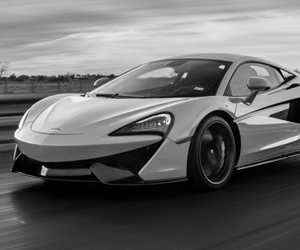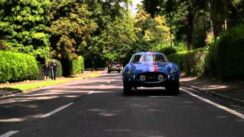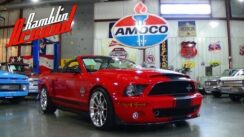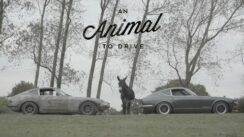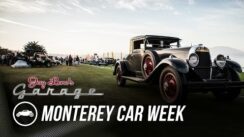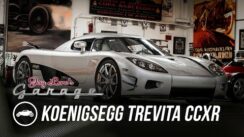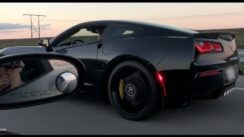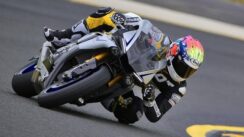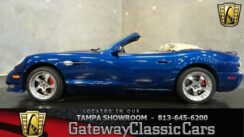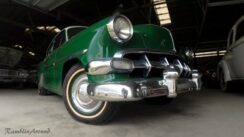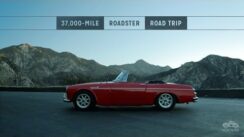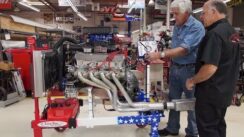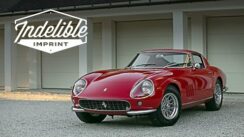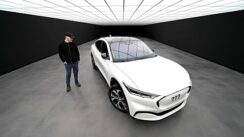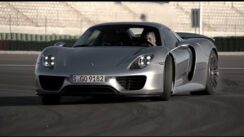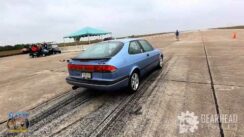A Look at Rolls-Royce through the Eras

Early Years
The dawn of the Rolls-Royce brand started when Henry Royce, a successful engineer and Charles Rolls, an owner of one of the United Kingdom’s original car dealers, agreed to sell motor cars under the name Rolls-Royce. That moment marked the beginning of an extraordinary partnership between two innovative men and in 1904 the Rolls-Royce brand was born. Only three years following that formative moment, Rolls-Royce produced the iconic 1907 Silver Ghost, an automobile which would solidify the marque’s legendary status.
1907: 40/50 HP Silver Ghost London to Edinburgh Run of the Silver Ghost over 14.371 miles in top gear. Production moves to Derby.
1910: C.S. Rolls killed in airplane crash in Bournemouth.
1911: The Spirit of Ecstasy is introduced. Designed by renowned sculptor Charles Sykes.
1914: Aircraft engine production started.
Models Introduced:
10 HP 1904 – 1906
20 HP 1905 – 1906
30 HP 1905 – 1906
40/50 HP “Silver Ghost” 1907 – 1925
1920s
The 1920s marked the start of Rolls-Royce’s contribution to aviation engineering. Following the First World War and the opening of the first Rolls-Royce factory in Massachusetts, USA, the ‘R’ engine set a new world air speed record.
Developed for Britain’s entry into the 1929 Intercontinental Schneider Trophy seaplane contest, it evolved into the Merlin engine, which later powered both the Spitfire and Hurricane.
1921: Manufacturing plant opened in Springfield, Massachusetts.
Models Introduced:
New Phantom (Phantom I) 1925 – 1929
20 HP 1922 – 1929
Phantom II 1929 – 1935
20/25 HP 1929 – 1936
1930s
In the 1930s, Rolls-Royce broke world records on land and sea. And automation saw the arrival of Phantom III – the first ever Rolls-Royce to be built with a V12 engine.
Travelling at 272.46 mph, Sir Malcolm Campbell broke the world land speed record in 1933 with Bluebird. But George Eyston smashed this time four years later by reaching 312.2 mph in Thunderbolt – a motor car powered by two Rolls-Royce ‘R’ engines. And Sir Henry Segrave broke the world sea record at 119 mph in Miss England II, also engineered with ‘R’ engines. Sir Henry was killed moments later after colliding with a submerged tree stump.
Rolls-Royce improved the chassis of Phantom II, making it the first choice for the growing middle class who would cruise down to the south of France for the weekend. The same decade saw the launch of the first ever V12-engined Rolls-Royce – Phantom III.
1931: Bentley Motors Springfield, Massachusetts factory is closed as a result of the Great Depression.
1933: Sir Henry Royce died.
Models Introduced:
Phantom III 1936 – 1939
25/30 HP 1936 – 1938
Wraith 1938 – 1939
1940s
The 1940s saw new developments in craftsmanship and design. Until 1959, each Silver Wraith had an individual, coach-built body.
Being constructed on a separate chassis meant that Silver Wraith bodies were heavy, so a 4,887cc engine was installed to cope with the weight.
When Silver Dawn came on the scene, it was the first Rolls-Royce sold with a standard steel body. Much lighter than the coach-built body of Silver Wraith, it was a pioneering effort from Rolls-Royce. While all steel-bodied models were exported, a few coach-built models still survive today and are highly collectible.
1947: Production of motor cars moved to Crewe, with the Silver Wraith being the first post-war model there.
1949: Silver Dawn became the first standard steel saloon.
Models Introduced:
Silver Wraith 1947 – 1959
Silver Dawn 1949 – 1955
1950s
The 1950s marked the start of a long-standing relationship between Rolls-Royce and the British royal family.
Replacing Daimler as the preferred motor car supplier to the British monarchy, Her Royal Highness Princess Elizabeth took delivery of the first Phantom IV in 1950. Designed exclusively for royalty and heads of state, Phantom IV is one of the rarest Rolls-Royce motor cars in the world, with only 18 ever built.
The introduction of Silver Cloud came in 1955. Designed by JP Blatchley and capable of a top speed of 106 mph, it featured the same 4,887cc engine as Silver Dawn but with a completely new and handsome steel body.
By the end of the 1950s, Phantom V had arrived. Powered by a V8 engine and featuring a coach-built body. It was a huge success.
Models Introduced:
Phantom IV 1950 – 1956
Silver Cloud I 1955 – 1959
Silver Cloud II 1959 – 1962
Phantom V 1959 – 1968
1960s
By the time the Swinging Sixties began, Rolls-Royce had begun to appeal to a new breed of owner. Actors, rock stars and celebrities chose the marque as a symbol of their success.
Rolls-Royce also graced cinema screens. Sharing the limelight with Omar Sharif, Ingrid Bergman and Rex Harrison, a Barker-bodied Phantom II was featured in the 1965 film, The Yellow Rolls-Royce.
In the same year, John Lennon bought a Phantom V. Leaving the factory with a plain white finish, Lennon had it repainted in matte black before opting for an outlandish, colorful design instead. Now, it’s one of the most valuable items of pop memorabilia ever.
1965: Silver Shadow became the first monocoque model.
Models Introduced:
Silver Cloud III 1962 – 1966
Silver Shadow I 1965 – 1976
Phantom VI 1968 – 1991
1970s
The 1970s was a challenging decade for Rolls-Royce but, following re-launch as two separate companies, the decade saw the arrival of two exciting new motor cars.
Under Rolls-Royce Motors Limited, the stylish two-door Corniche was created. Based on Silver Shadow, it was hand-built by Mulliner Park Ward. Available as either a hardtop or a convertible, just 1,306 of them were built.
The Camargue, also by Mulliner Park Ward, was coach-built on a Silver Shadow platform with styling by iconic Italian coachbuilder, Pininfarina. The first Rolls-Royce designed to metric dimensions, it offered advanced features such as automatic split-level air conditioning.
Silver Shadow II was further enhanced with wrap-around black bumpers, an air dam below the front part of the motor car, and improved handling.
February 1971: Rolls-Royce Limited went into receivership and was divided into separate aero and motor car companies. The legal rights to the name Rolls-Royce remained with what became the state-owned aero-engine manufacturer. Subsequently it was privatized in 1987.
May 1973: Rolls-Royce Motors (still incorporating Bentley Motors) is formed.
Models Introduced:
Corniche 1971 – 1987
Camargue 1975 – 1986
Silver Shadow II 1977 – 1981
1980s
By 1980, British defense company, Vickers, had bought Rolls-Royce Motors Limited, producing Rolls-Royce alongside Bentley motor cars. The new Rolls-Royce Motor Cars Limited was floated on the London Stock Exchange in 1985.
Another record-breaking performance proved that Rolls-Royce was still leading the way in engineering. In 1983, Thrust 2 broke the land-speed record at 633.468 mph, powered by a Rolls-Royce Avon 302 jet engine.
Also taking pioneering steps in automation was Silver Spirit – Silver Spur with four inches added to its wheelbase. The limousine version increased its length by 42 inches.
Models Introduced:
Silver Spirit 1980 – 1989
Silver Spur 1980 – 1989
Silver Spur Limousine 1982 – 1999
Corniche II 1987 – 1989
1990s
The 1990s marked a new chapter in the brand’s rich history when the BMW Group bought the rights to produce Rolls-Royce cars in 1998. That opened a new and exciting new chapter for Rolls-Royce.
1990: Rolls-Royce Motor Cars merged with defense manufacturer Vickers.
1998: BMW acquired the rights to the name Rolls-Royce for automotive business from its aero engine partner Rolls-Royce plc. Immediate start of ‘Project Rolls-Royce’: Establish a new company, find a new location, build a new manufacturing plant and head office, recruit a new team, design a new motor car.
1998: Volkswagen acquires the factory at Crewe and the brand Bentley.
Models Introduced:
Corniche III 1990 – 1991
Mulliner Spur 1990-1991
Silver Spur II 1990-1993
Corniche IV 1992 – 1995
Silver Spirit II 1990 -1993
Silver Spirit III 1994-1995
Silver Spur III 1994-1997
Corniche S 1995
Silver Dawn 1995-1998
Silver Spirit 1996-1997
Silver Spur (96) 1996-2000
Park Ward Limousine 1996 – 1999
Silver Seraph 1998 – 2001
Corniche 1999 – 2002
2000s & Beyond
2001 August 2001: Ground breaking for new home at Goodwood, West Sussex.
2002 June 2002: First pre-production Phantoms hand made at the new manufacturing plant, still largely under construction.
2003 01 January 2003: New company ‘Rolls-Royce Motor Cars Limited’ established, as a member of the BMW Group (with the separation of the brands Rolls-Royce and Bentley after 71 years).
January 2003: World launch of the Phantom and the new plant at Goodwood.
Handover of very first Rolls-Royce Phantom to its proud owner in the UK.
Models Introduced:
Phantom 2003 – Present Day
Rolls-Royce continues to innovate and debut new models including the Phantom Drophead Coupe (2007), Phantom Coupe (2008), Ghost (2010), Wraith (2014), and Dawn (2016).















































































































































